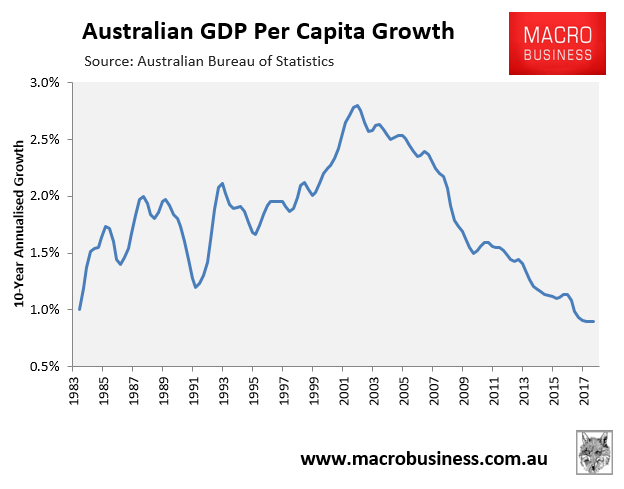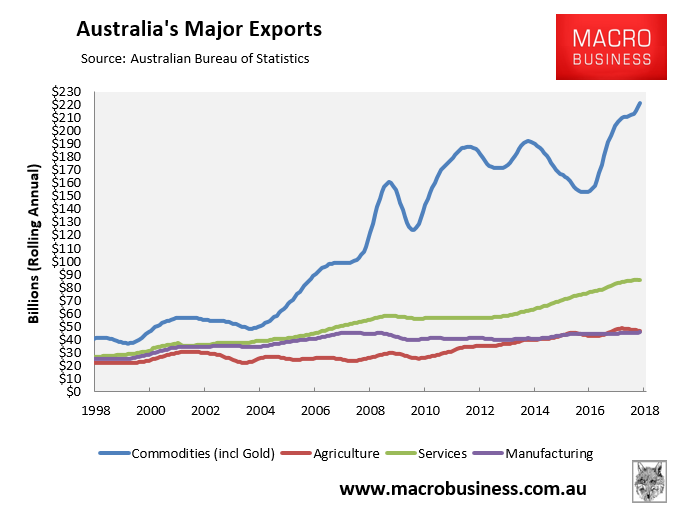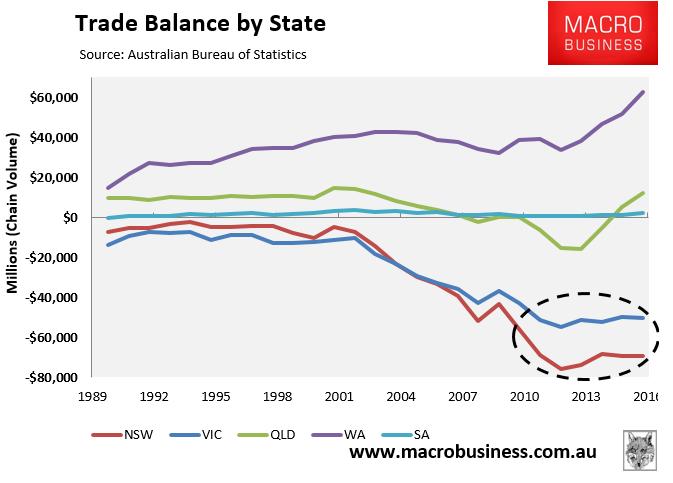Ian Harper is the latest mainstream economist to spruik the riches that supposedly come from Australia’s mass immigration ‘Big Australia’ policy:
The Productivity Commission’s five-yearly review noted that 80 per cent of Australia’s output is produced in cities, and half of that comes from Sydney and Melbourne. Making our two biggest cities more efficient, affordable and accessible will raise the living standards of almost all Australians, directly and indirectly, and deliver growth in which we all share. As the cities grow, they will deliver more and better jobs and business opportunities, including in regional areas that service them…
None of Melbourne’s growth has been driven by extracting resources from the ground. It has been driven by the type of knowledge-intensive service industries that also are concentrated in Sydney. These industries have led to a self-referential, virtuous circle — people come because there are jobs, and there are jobs because they come.
Knowledge industries need a diverse and creative workforce to thrive. They require people with different skills and experiences, from different backgrounds, who collaborate to find more efficient solutions to pressing problems and then leverage them.
This is closed economy thinking by Harper. The world has 7.4 billion people. We don’t need to import them to sell to them.
Sure, cutting immigration would lower aggregate economic growth, since less inputs in people means less outputs in GDP. So what? It’s not like Australia’s growth in GDP per capita would be effected, which has collapsed since the immigration floodgates were thrown open:

Lowering immigration would also reduce one of the major drags on productivity: rising infrastructure bottlenecks and congestion; would lower the Australian dollar (other things equal), rebalancing the economy away from ponzi growth towards productive tradeable growth; it would help to lift wages; and would improve Australia’s current account, since Australia would import far less and the nation’s mineral wealth (and exports) would be shared among less people:

On the last point – the current account – notice below how “the great economic engines of Sydney and Melbourne” have driven gigantic trade deficits?

Basically, all the extra migrants that have flooded into these two cities have barely lifted exports, since these cities don’t actually produce much that is tradeable. By contrast, imports have skyrocketed via more purchases of consumer goods like flat screen TVs, cars, furniture, etc. These net imports must be paid for, either by increasing the nation’s debt or through selling-off the nation’s assets. We’ve been doing both.
The truth is mass immigration promotes ‘dumb’ growth, concentrated in urbanisation and household debt, and associated sectors benefit (think Highrise Harry and Gerry Harvey). This has its limits, as we are already seeing in debt stress everywhere and declining liveability, as it benefits the few over the many.
But it’s not the preferred model of growth. Far from it. Productivity enhancement and competitiveness are a better model over the long run as they lower debt while boosting incomes per capita, are more meritocratic, and will send the 40% of the economy that is tradeable into overdrive.
Once immigration is cut there’ll be an adjustment period while the real exchange rate tumbles. But the Australian economy will be far better off in the medium and long term, as will living standards.

